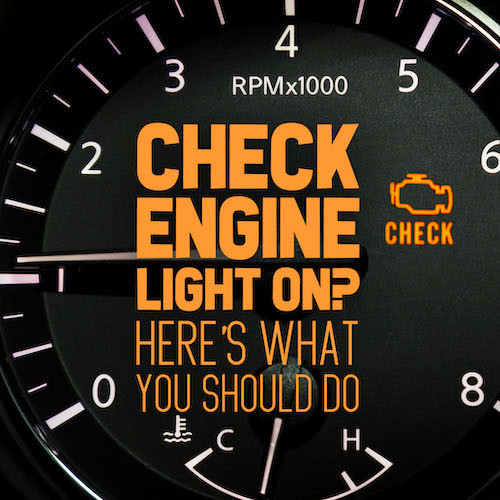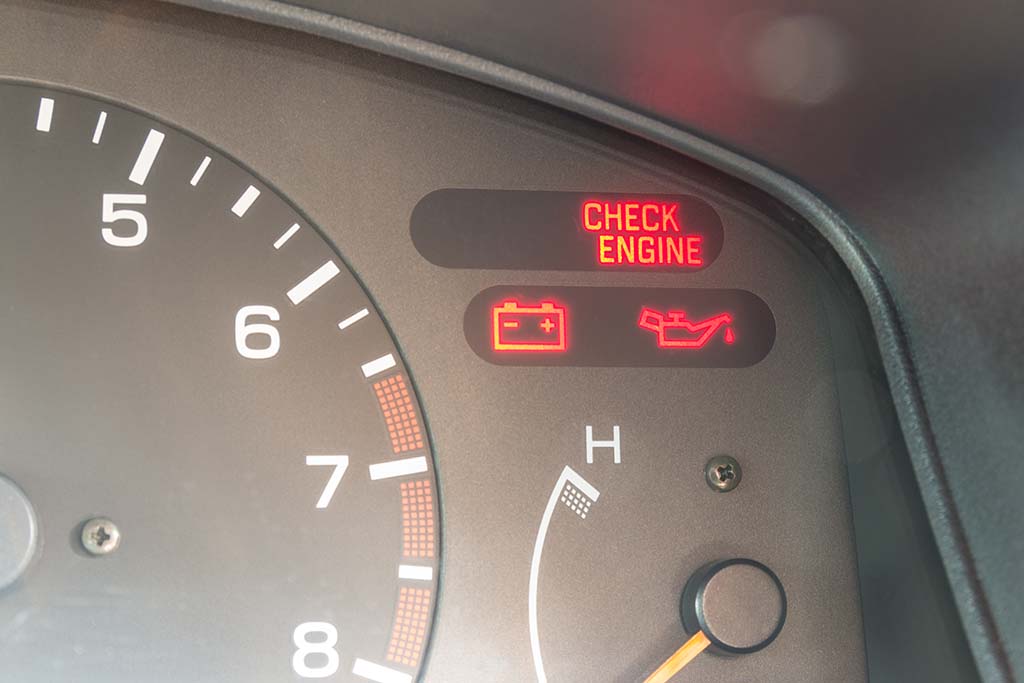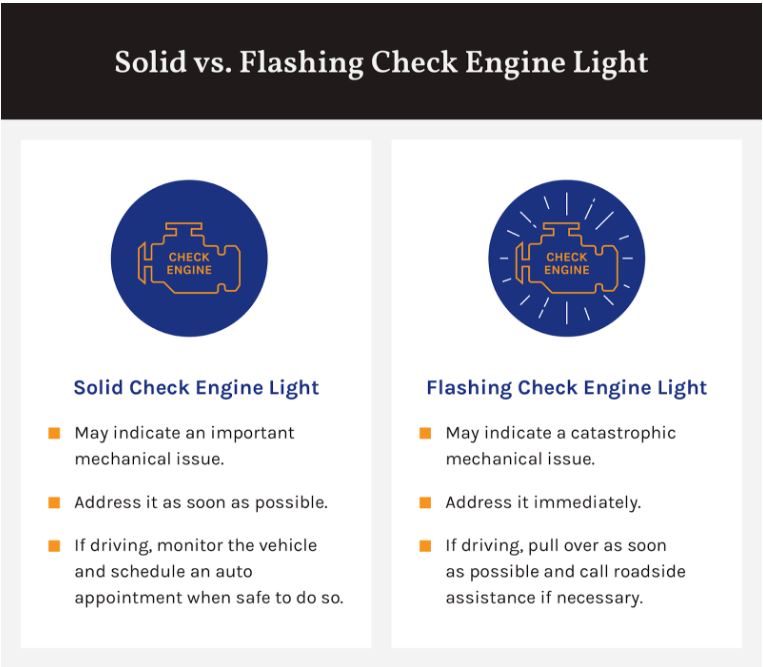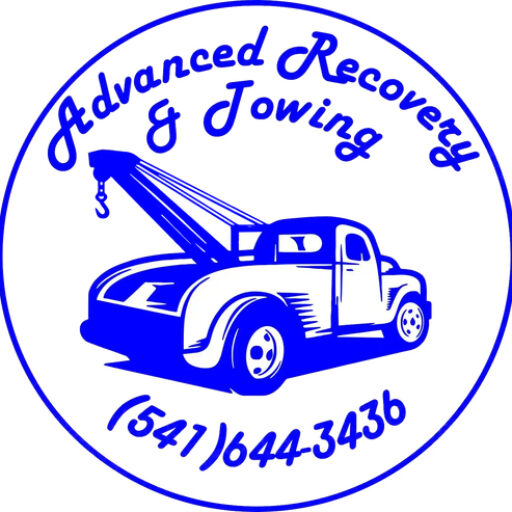Check Engine Light?
What to do
The moment that check engine light flicks on, a driver’s heart skips a beat. It’s that small, glowing symbol of potential doom, silently mocking you from the dashboard. But what does it really mean, and how should you respond?
Key Takeaways
- The check engine light signals a range of issues, from minor to critical.
- Solid and flashing lights indicate different levels of urgency.
- Diagnostic services can pinpoint the exact problem.
- Knowing common causes helps in swift action.

What Is the Check Engine Light?
The check engine light is your car’s way of telling you something’s amiss. It’s part of the onboard diagnostics system and can light up due to a myriad of reasons. Ignoring it isn’t an option; understanding it is.
Common Causes of the Check Engine Light
Loose or Faulty Gas Cap
Believe it or not, one of the most common reasons for the check engine light is a loose or faulty gas cap. This small, seemingly insignificant part can cause fuel vapors to leak out, throwing off your vehicle’s emissions system.
Oxygen Sensor Failure
The oxygen sensor measures the amount of unburned oxygen in the exhaust. A faulty sensor not only triggers the check engine light but also affects fuel economy and emissions.
Catalytic Converter Issues
Your catalytic converter reduces harmful emissions by converting carbon monoxide and other harmful gases into less dangerous substances. A failing converter is a serious issue and needs immediate attention.
Spark Plug/Ignition Coil Problems
Spark plugs and ignition coils are crucial for engine performance. Problems here can lead to engine misfires, reduced power, and increased emissions.
Solid vs. Flashing Check Engine Light
Solid Check Engine Light
A solid check engine light means there’s an issue, but it’s not urgent. It’s a sign to get your car checked soon.
Flashing Check Engine Light
A flashing light, however, is a red alert. It usually indicates a severe misfire which can damage the catalytic converter and other components. Immediate service is necessary.
Diagnostic Services
OBD-II Scanner
The Onboard Diagnostics (OBD-II) scanner is a tool that reads error codes from your car’s computer. These codes help mechanics pinpoint the exact issue.
Professional Diagnostic Services
While OBD-II scanners are great, professional diagnostic services offer more comprehensive insights. They not only read the codes but also interpret them accurately and check for related issues.
Example: A driver noticed their check engine light was flashing. Using an OBD-II scanner, they found an error code indicating a cylinder misfire. A trip to the mechanic revealed the root cause: a failing ignition coil. Prompt repair prevented further damage.
Common Check Engine Light Codes
| Error Code | Description | Severity |
|---|---|---|
| P0171 | System Too Lean (Bank 1) | Moderate |
| P0300 | Random/Multiple Cylinder Misfire Detected | High |
| P0420 | Catalyst System Efficiency Below Threshold | High |
| P0442 | Evaporative Emission System Leak Detected | Low |
| P0500 | Vehicle Speed Sensor | Moderate |
For more details on common causes, you can check out the AAA article.
When to Pull Over
Immediate Stop Required
If the check engine light is flashing, pull over safely and call for assistance. Continuing to drive can cause severe damage.
Can You Drive a Short Distance?
A solid light means you can drive to the nearest service center, but don’t delay. The issue needs addressing to avoid escalating problems.
Real Story: I remember the time my check engine light started flashing on a road trip. Ignoring it wasn’t an option. I pulled over, called a tow truck, and sure enough, the issue was a misfire that could have wrecked the catalytic converter if I’d kept driving.
The Role of Towing Services
Towing services are the unsung heroes when your check engine light turns a peaceful drive into a nerve-wracking experience. They provide the safety net that ensures you get your car to the mechanic without risking further damage.
Choosing the Right Towing Service
Not all towing services are created equal. Look for ones with good reviews, fast response times, and reasonable rates. Some even offer diagnostic services on-site to give you a head start on repairs.
Fact: A study found that 70% of drivers experiencing a check engine light delay seeking help, leading to more costly repairs.
External Resources for Further Reading
For more insights on handling your check engine light, you can visit MyDriver’s Edge. Their detailed guides provide useful tips and tricks to keep your car in top shape.
In summary, the check engine light isn’t something to ignore or fear but a helpful tool in maintaining your vehicle. Understanding what it means, knowing when to seek help, and using the right services can save you from costly repairs and dangerous situations.
Table of Common Check Engine Light Issues
| Issue | Description | Recommended Action |
|---|---|---|
| Loose/Faulty Gas Cap | Can cause fuel vapors to leak out. | Tighten or replace the gas cap. |
| Oxygen Sensor Failure | Affects fuel economy and emissions. | Replace the sensor. |
| Catalytic Converter Issues | Converts harmful emissions to less dangerous substances. | Immediate repair or replacement. |
| Spark Plug/Coil Problems | Leads to engine misfires and reduced power. | Replace spark plugs/ignition coils. |
| Mass Airflow Sensor Issues | Affects fuel injection and air-fuel ratio. | Clean or replace the sensor. |
For further reading and more details, check out the comprehensive guide on Driveway.

Car dashboard warning lights symbols
Frequently Asked Questions (FAQs)
What Should I Do When My Check Engine Light Comes On?
When that light pops on, don’t panic. Start by checking your gas cap. A loose or damaged cap can often trigger the light. If tightening or replacing it doesn’t work, you’ll need to dig deeper.
Can I Drive With the Check Engine Light On?
Yes and no. A solid light usually means the issue isn’t urgent, but should be checked soon. A flashing light indicates a serious problem that requires immediate attention. Driving with a flashing check engine light can lead to severe engine damage.
How Much Does It Cost to Diagnose a Check Engine Light?
The cost varies. Basic diagnostics can start as low as $50, but comprehensive diagnostic services can run up to $200 or more, depending on the complexity of the issue and the region.
Are There Any DIY Methods to Diagnose Check Engine Light Issues?
Yes, you can use an OBD-II scanner to read error codes. These devices are relatively affordable and user-friendly. However, interpreting the codes correctly might require some mechanical knowledge.
What Are the Most Common Check Engine Light Problems?
Some of the most common issues include:
- Loose/Faulty Gas Cap: An easy fix but often overlooked.
- Oxygen Sensor Failure: Affects emissions and fuel economy.
- Catalytic Converter Issues: A serious problem needing immediate attention.
- Spark Plug/Coil Problems: Can cause engine misfires and reduced power.
- Mass Airflow Sensor Issues: Affects the air-fuel ratio.
Real-World Examples
The Tale of the Vanishing Gas Cap
I recall a friend’s road trip to the mountains where the check engine light turned on halfway through. It was late, and the nearest town was miles away. After a quick Google search and a makeshift OBD-II scan from a local gas station, the culprit was identified: a loose gas cap. A simple twist and the problem was solved. Crisis averted, the trip continued without further incident.
The Ignition Coil Saga
In another instance, a colleague noticed a rough idle and poor acceleration in their car. The check engine light was a solid glow. An OBD-II scan revealed a P0300 error – a random/multiple cylinder misfire. A visit to the mechanic confirmed that the ignition coil was on its last legs. A quick replacement later, the car was back to purring like a kitten.
Diagnostic Services: A Closer Look
The Role of Mechanics
Professional mechanics don’t just rely on error codes. They use their expertise to interpret the data, consider the symptoms, and perform additional tests. This holistic approach ensures that the underlying issue is accurately identified and addressed.
Advanced Diagnostic Tools
Some high-end diagnostic tools can perform real-time data streaming, component activation tests, and even manufacturer-specific diagnostic procedures. These tools are crucial for modern vehicles with complex electronic systems.
The Importance of Regular Maintenance
Regular maintenance checks can often catch issues before they trigger the check engine light. Services like oil changes, air filter replacements, and routine inspections help keep your vehicle in top condition, reducing the likelihood of unexpected problems.
Example: A well-maintained vehicle is less likely to experience severe issues. Regular oil changes, for instance, ensure that engine components are well-lubricated, reducing wear and tear and preventing costly repairs.
The Economic Impact of Ignoring the Check Engine Light
Ignoring the check engine light can be costly. Small issues can escalate into major repairs. For example, a faulty oxygen sensor is relatively inexpensive to replace. However, if left unchecked, it can lead to catalytic converter failure, a much pricier fix.

External Resources for More Information
For additional reading, visit the following links:
- AAA: Check Engine Light
- MyDriver’s Edge: What to Do When the Check Engine Light Comes On
- Driveway: Common Reasons for Check Engine Light
Preventative Measures and Best Practices
Regular Vehicle Check-Ups
Routine check-ups can prevent many issues that trigger the check engine light. Scheduling regular maintenance, even when the car seems to be running fine, is key to longevity.
Keeping an OBD-II Scanner Handy
Investing in a personal OBD-II scanner can save you from unnecessary stress. It provides immediate insights into what’s wrong, helping you decide the next steps without delay.
Building a Relationship with a Trusted Mechanic
Having a reliable mechanic you trust can make a world of difference. They can provide valuable advice, perform necessary repairs, and keep your vehicle in peak condition.
Understanding Your Vehicle
Taking the time to understand the basic functions and common issues of your vehicle can help you react appropriately when the check engine light comes on. Knowledge is power, and in this case, it can save you money and time.
Tips for Towing Services
Selecting the Right Service
When choosing a towing service, look for:
- Fast response times
- Reasonable rates
- Good customer reviews
- Additional services like on-site diagnostics
Emergency Preparedness
Having a plan in place for roadside emergencies is crucial. Know the contact information for a reliable towing service and keep it accessible. Ensure your vehicle is stocked with emergency supplies like a spare tire, jack, and first aid kit.
Towing and Insurance
Check if your auto insurance includes towing services. Some policies offer roadside assistance, which can save you money and provide peace of mind during a breakdown.
